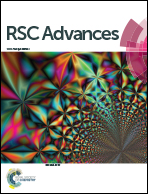Tribological properties of castor oil tris(diphenyl phosphate) as a high-performance antiwear additive in lubricating greases for steel/steel contacts at elevated temperature
Abstract
Castor oil tris(diphenyl phosphate) (CODP) was synthesized using an environmentally friendly and renewable resource – castor oil, and its tribological properties were evaluated in lithium 12-hydroxystearate greases (LHG) and lithium complex greases (LCG) at 150 °C. The tribological behaviors of the additive for LHG and LCG application in steel/steel contacts were evaluated on an Optimol SRV-IV oscillating reciprocating friction and wear tester as well as on a MS-10J four-ball tester. The worn steel surface was analyzed by a JSM-5600LV scanning electron microscope and a PHI-5702 multifunctional X-ray photoelectron spectrometer. The results indicated that CODP as the additive could effectively reduce the friction and wear of sliding pairs in the two base greases. The tribological performances were also better than the traditional used zinc dialkyldithiophosphate (ZDDP) based additive package in LHG and also in LCG. Boundary lubrication films composed of Fe(OH)O, Fe3O4, FePO4 and compounds containing P–O bonds were formed on the worn surface, which resulted in excellent friction reduction and antiwear performance.


 Please wait while we load your content...
Please wait while we load your content...